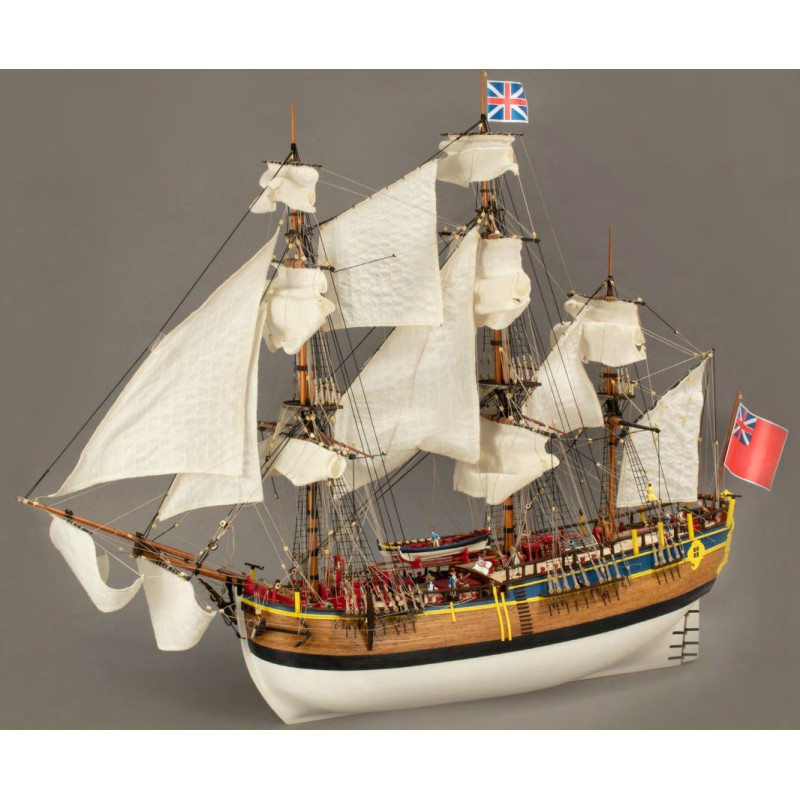ARTESANIA LATINA 22520 HMS Endevour
Customized product.
If you are interested in purchasing a model of the boat HMS Endeavour from the Spanish company Artesania Latina, please write to us and we will check the availability of the product with the supplier, offer an attractive price and give you an exact delivery date (usually it is from 3 to 5 working days).
HMS Endeavour was a British Royal Navy survey ship that Lieutenant James Cook commanded on his first voyage of discovery to Tahiti, New Zealand and Australia between 1768 and 1771. It was launched in 1764 as the transport ship Earl of Pembroke, and the Navy purchased it in 1768 for a scientific mission in the Pacific Ocean and exploration of the seas in search of the presumed Terra Australis Incognita, or "unknown southern land." As His Majesty's Bark Endeavor, she set sail from Plymouth in August 1768, circumnavigated Cape Horn and reached Tahiti in time to observe the transit of Venus across the Sun in 1769. She then sailed into the largely unexplored ocean to the south, stopping at the islands of Huahine, Bora Bora and Raiatea west of Tahiti to enable Cook to seize them for Britain. In September 1769, she anchored off the coast of New Zealand, becoming the first European ship to reach the islands since Abel Tasman's Heemskerck 127 years earlier. The Endeavor sailed west from Batavia, rounding the Cape of Good Hope on March 13, 1771 and reaching the English port of Dover on July 12. The ship made a voyage across the Pacific, spending the next three years transporting soldiers and cargo to the Falklands, after which it was largely forgotten. Its name was changed in 1775 after the ship was sold to a private individual and was used to transport timber from the Baltic Sea. It was reused as a British troop transport during the War of American Independence, but was eventually sunk during the blockade of Narragansett Bay, Rhode Island, in 1778. Historical evidence indicates that the ship, along with four other British transport ships, sank north of Goat Island in Newport Harbor. Relics of the Endeavor, including the anchor and six guns, are on display in maritime museums around the world. A replica of the Endeavor was launched in 1994 and is moored next to the Australian National Maritime Museum in Sydney Harbour. NASA's space shuttle Endeavor was named after it, as was the Apollo 15 command module that took a small piece of wood from Cook's ship into space, and SpaceX's Crew Dragon C206 capsule was named after Endeavor during Demo 2. It was named. The ship also appears on a New Zealand 50-cent coin.
HMS Endeavour boat specifications:
- type - three-masted ket type coal barge, cruise research vessel
- displacement: 369 tons
- length: 29.7 m
- width: 8.9 m
- height of hold: 3,4 m
- speed: 8 knots
- armament - six 4-pounder guns and eight rotary guns
- crew - 85-94 people
Want to learn more about HMS Endeavour ? See HERE.
Model specifications:
- scale: 1/65
- length: 815 mm
- width: 300 mm
- height: 650 mm
age recommendations: 14+
For more information, photos and assembly instructions, please visit the manufacturer's website (link above in the tab).
Presentation of the model on the video:
A little history on the video:
And, what does it look like in 1:1 scale ?












